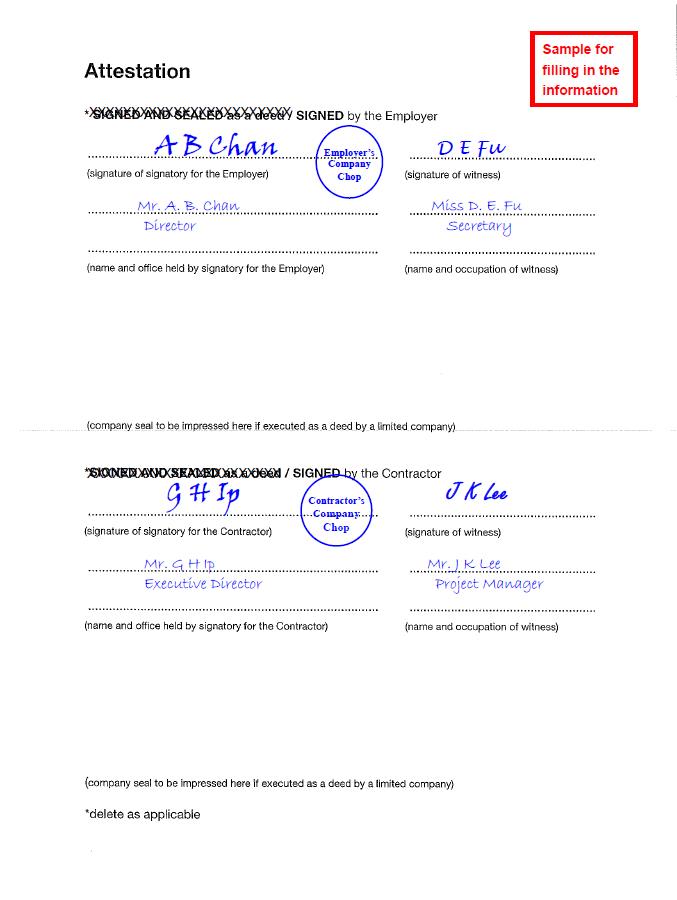Note
- 27/3/2023: Generally revised.
- 20/2/2023: Revised.
- 20/3/2022: Revised.
- 5/4/2022: Split from "Award contract".
- 20/3/2020: Punctuation standardised.
- 7/4/2019: "Originals of Tender Correspondence" added.
Generally
- The contract comes into existence after the mutual agreement of the letter of award or the letter of intent (if having temporary binding effect).
- The post contract stage therefore should start from that time.
- The preparation of the Contract Documents should be done as soon as possible after the mutual agreement of the letter of award, but is often regarded as not of the first priority because the absence of the formal Contract Documents would not affect the contract being in existence.
Prepare formal Contract Documents
製訂合同文件
- Get the counter-signed copy of the letter of award or letter of intent.
- Originals of Tender Correspondence:
- Obtain the originals of the tender correspondence from the recipients and bind them into the original set of the Contract Documents:
- This is a customary practice to bind in the originals. However, sometimes it takes too long to obtain the originals from the recipients because this is not their first priority to attend to this matter, or the recipients would want to retain the originals as original evidence
- Use fair photocopies of the originals for binding into the original set of the Contract Documents:
- Signing of the Contract Documents with such photocopies bound in should be sufficient to signify that the signing parties recognize the fair photocopies represent the true contents of the originals
- Notify the contract parties such intention to use fair photocopies in case they may disagree:
- Some organizations tend to be dogmatic to follow the customary practice.
- Obtain the originals of the tender correspondence from the recipients and bind them into the original set of the Contract Documents:
- Ask the Architect to prepare and bind the Contract Drawings for signing as well.
- Ascertain the number of original and certified true copies required.
- Check for the updated registered addresses.
- Amendments and Special Conditions to the Form of Contract:
- Physically amend the Form by including and initialling overriding clauses to incorporate the amendments and special conditions (seldom adopted)
- Stamp a reminding note against the amended clause to indicate that the clause has been amended elsewhere (quite frequently adopted)
- Do not make any physical amendments or marks at all because the rest of the Contract Documents should have made it clear that there are amendments or special conditions elsewhere in the Contract Documents (quite frequently used).
- Calculate the Date for Completion from the overall duration (Date for Possession or Date for Commencement counted as day 1 - be careful when using words like “after”, “from”, “commencing from”, “commencing on”. NEC does not count the starting date as day 1.).
- Calculate the limit of retention (based on a percentage of the Contract Sum exclusive of prime cost sums for Nominated Sub-Contracts; rounded off; plus the retention funds held in respect of Nominated Sub-Contractors).
- Calculate the amount of surety bond (based a percentage of the Contract Sum; rounded off).
- Check the Tender Documents to see whether to execute as a simple contract or contract under seal and type the signing page accordingly.
- Consider significance of the date of signing (usually not significant because the contract is already in force).
(generally revised, 27/3/2023)
Sign as simple contract
签署合同
- Example of the signing page of the Standard Form of Building Contract 2005/2006 Edition:
